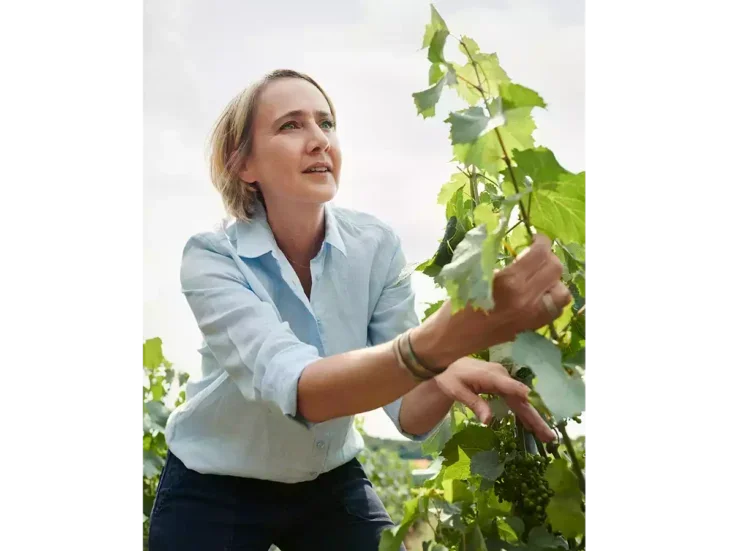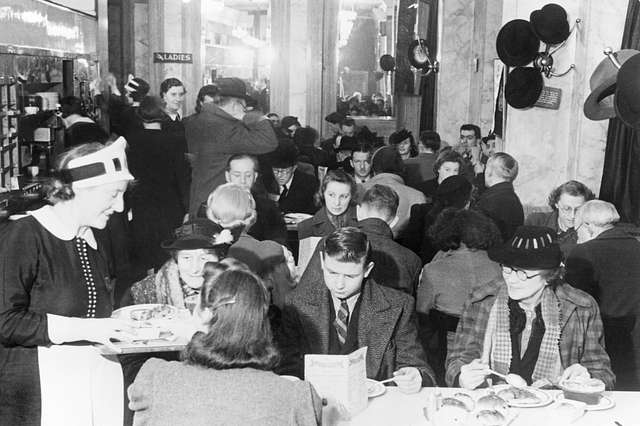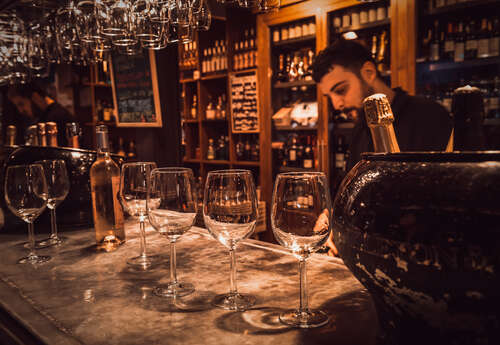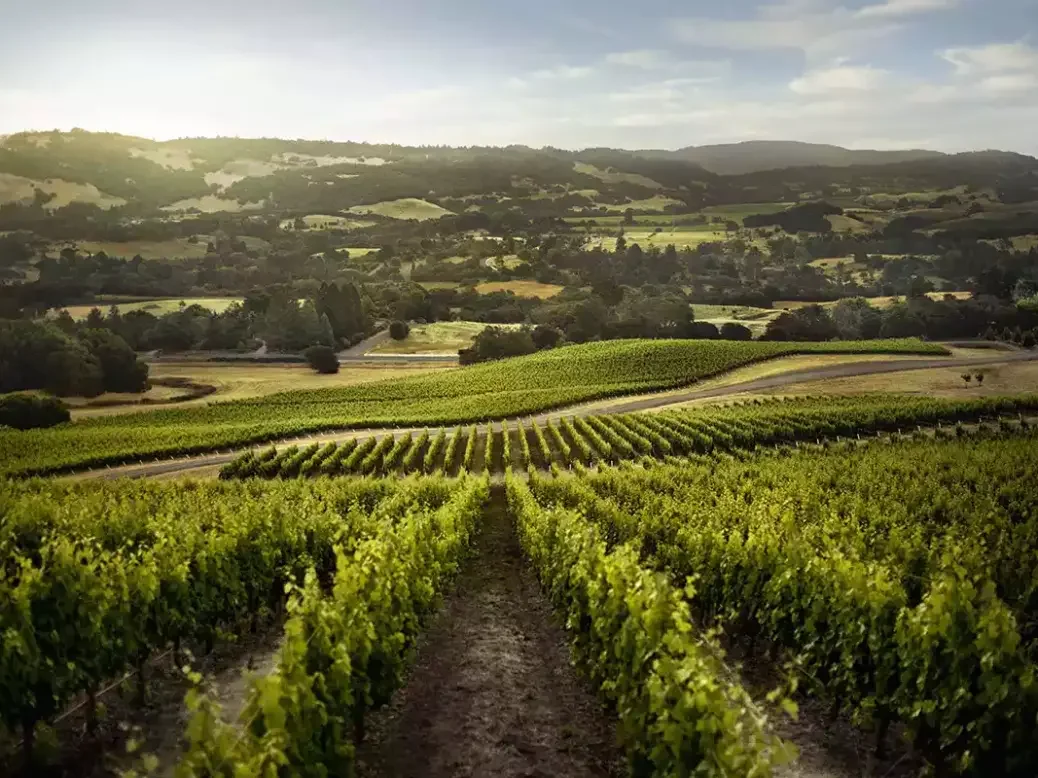
Anthony Rose talks to the father-and-daughter team overseeing Vérité, the Jackson family’s Petrus-inspired project in Sonoma.
The Judgment of Paris tasting in 1976 was not just a wake-up call for an incredulous wine world; it was a turning point for Jess Jackson, too. Long convinced by the untapped potential of Sonoma County terroir, Jackson approached—yes—a Frenchman, Bordeaux winemaker Pierre Seillan, and asked him if he could make a Merlot as good as Petrus. “As good as?” replied Seillan. “Why not better?” Arrogant French cheek or tongue in cheek? Neither. Seillan was as serious as Jackson about the prospect of making great wine in California.
Pierre Seillan and Jess Jackson had met in 1995 after their wives, Monique Seillan and Barbara Banke, had been introduced to each other at a VinExpo event by Vicky Adams, a mutual acquaintance. Spotted by Jackson, Seillan’s blending talent was to become the key to his work, using micro-crus as the building blocks of Vérité’s La Muse, La Joie, and Le Désir.
Seillan’s first vintage was at the family estate of Bellevue in Gascony in 1967, when he was aged just 17, working mainly with Bordeaux grape varieties. A prop forward for Armagnac Bigorre rugby team in his youth, he worked at Château de Targé at Saumur-Champigny in the Loire Valley from 1977 to 1979. This was followed by two decades of crafting wine for Raoul and Jean Quancard at a variety of Bordeaux châteaux across as many as eight appellations. The experience brought a deep understanding of the nuances of climate in different vineyard sites. According to his daughter Hélène, “My dad was making wines in seven châteaux in Bordeaux, blending different lots from different vineyard sites, and the sum was always greater than the parts.”
Before joining forces with the Jackson family, Pierre had spent a short time working as an intern in the Temecula Valley in Southern California in 1997. “Making wine from jammy grapes there was a useful lesson for me and stood me in good stead when I met Jess Jackson,” he recalls. The two men bonded over reconnaissance trips to vineyards around the state, and they soon saw eye to eye as to how to translate Jess Jackson’s vision for great Sonoma wine into reality. While their son Nicolas continued his studies in Bordeaux, Monique and their daughter Hélène packed their bags for California, paving the way for Pierre’s arrival at the end of the year. It was Au revoir, La France, and hi to California.
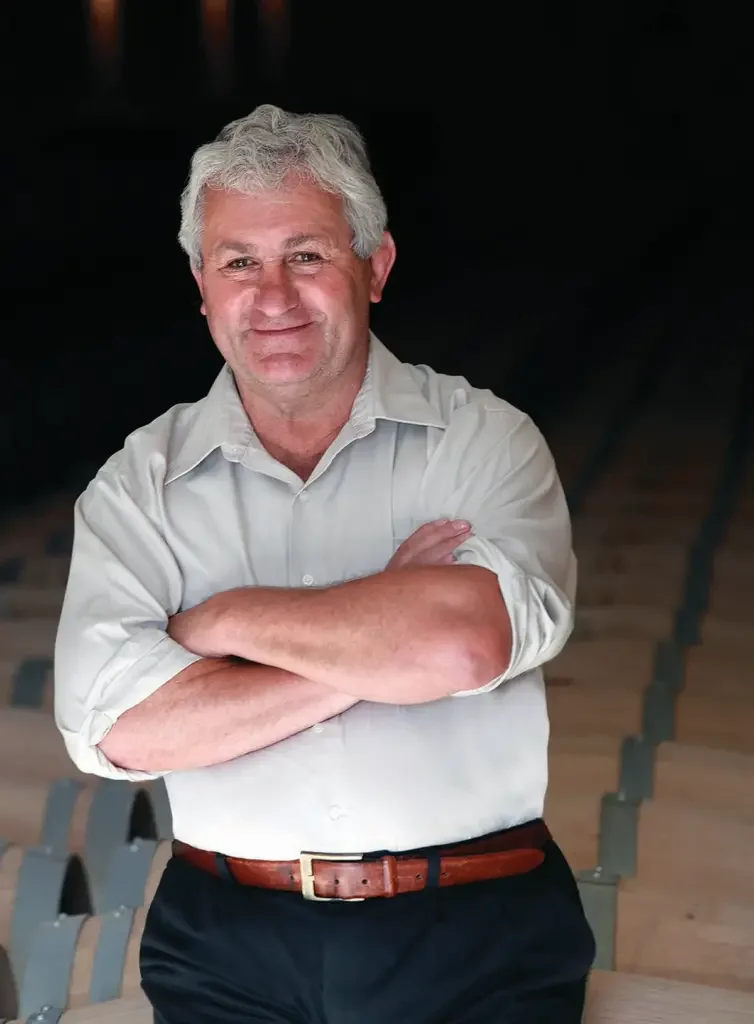
An architecture for blending
Pierre’s first vintage at Vérité was 1998—a tough baptism, due not least to the bureaucratic challenges. Applying for a Green Card as a winemaker, Pierre was turned down on the grounds that UC Davis was already churning out more than enough winemakers. Changing tack, he reapplied as a viticulturist, but equally to no avail. On the brink of throwing in the towel, he decided to give it one final shot. “So, I applied again, this time as a vigneron—and since they couldn’t find anything equating to vigneron, they put me into the same category as movie star and Nobel Prize winner, and voilà, I got my Green Card.”
The topography of Sonoma is an intricate mosaic weaving together vineyards with different soils, expositions, and microclimates at levels below, in, and above the fog. The gorges traversing the coastal mountain ranges from west to east significantly influence the mesoclimate. Cold winds and coastal fogs drawn inland through the Petaluma Gap settle below layers of warm air rising from the interior valleys. Typically, the sun is up between 10 and 11 am, sending temperatures soaring to between 86 and 95˚F (30–35˚C) during the day but plummeting after 6pm to cool the vineyards down to between 52 and 55˚F (11–13˚C) at night. The natural oceanic air conditioning is the key to each of the different mesoclimates.
Unfettered by the constraints of appellation, Pierre Seillan soon reveled in the opportunity to explore and to fashion the terra incognita of Sonoma to his own designs. Fueled by a stubborn vigneron’s convictions (and a rugby player’s grit), he wove imagination into a strategy for crafting wines from a mosaic of diverse components. Working with the differences each block gives him, Pierre builds what he calls “an architecture for the blending” from an optimum number of micro-crus based on this diversity. “The Sonoma terroir is the soil and the sky, so even where you have the same three micro-crus, you have three micro-terroirs: below, in, and above the clouds. Each distinct soil provides a unique energy to each grape variety. With the style of the wine in my head still in embryo, I build the blend taking account of these synergies.”
Pierre took the name La Muse for Vérité’s Merlot-dominant blend from a group that included Armand de Maigret, a Frenchman, now at Screaming Eagle, who had been involved with Jackson family projects before that. His inspiration for La Joie was Jess Jackson himself, a flamboyant character full of boundless joie de vivre, who died in 2011. Le Désir, whose focus is on Cabernet Franc, emerged as a homage to Pierre’s love of the grape variety developed while working at Château de Targé. “Cabernet Franc was my love, Le Désir my dream.” Each is a blend of component parts sourced from some 50 distinct blocks scattered like jigsaw pieces in a grand puzzle over the four AVAs of Alexander Valley, Chalk Hill, Bennett Valley, and Knights Valley.
The plumpness of Merlot, Cabernet Sauvignon, and Cabernet Franc are brought out in the shallow, rocky, volcanic and loam soils of the largest of Sonoma’s AVAs, the warm Alexander Valley (920–2,130ft [280–650m]) and, lower down, in the gravelly soils of the warm, secluded Knights Valley (575–950ft [175–290m]). Merlot, Cabernet Franc, and Petit Verdot thrive at lower altitude in the chalky, volcanic ash soils of the small Chalk Hill AVA within the Russian River Valley (160–500ft [50–150m]). The sandy loam and volcanic soils of the cool Bennett Valley (575–850ft [175–260m])—another small AVA, with a long growing season—favor Merlot grown on northwest-facing foothills in and below the fog line.
A joint search for balance, elegance, and finesse
Under Pierre’s tutelage, his daughter Hélène has stepped seamlessly into the role of assistant winemaker at the Sonoma estate. Born in 1987, she Seillan her childhood in France and studied viticulture and enology at the Institut Rural de Vayres in Bordeaux. In 2006, she served as assistant winemaker for her father at the family’s Bordeaux estate. Immersed in all aspects of winery management, Hélène “caught the bug” that led to her first harvest at Vérité in 2008. They talk the same language, completing each other’s sentences without missing a beat, even if the accent on her English is American, and on Pierre’s, French.
While the 73-year-old still has one hand on the pipette, Hélène’s grasp on it is growing firmer. “As a family, we’ve been tasting wines since we were kids. Without knowing, we’ve been trained in wine as a way of life, so passing on to the next generation is a natural progression,” says Hélène. “Over the years, we’ve learned to work together,” she reflects. “I would say that 2013 felt like a step change. I was doing my own project on the side, and I started getting attention. I did the blends in 2013, and that’s when he realized I knew what I was doing.”
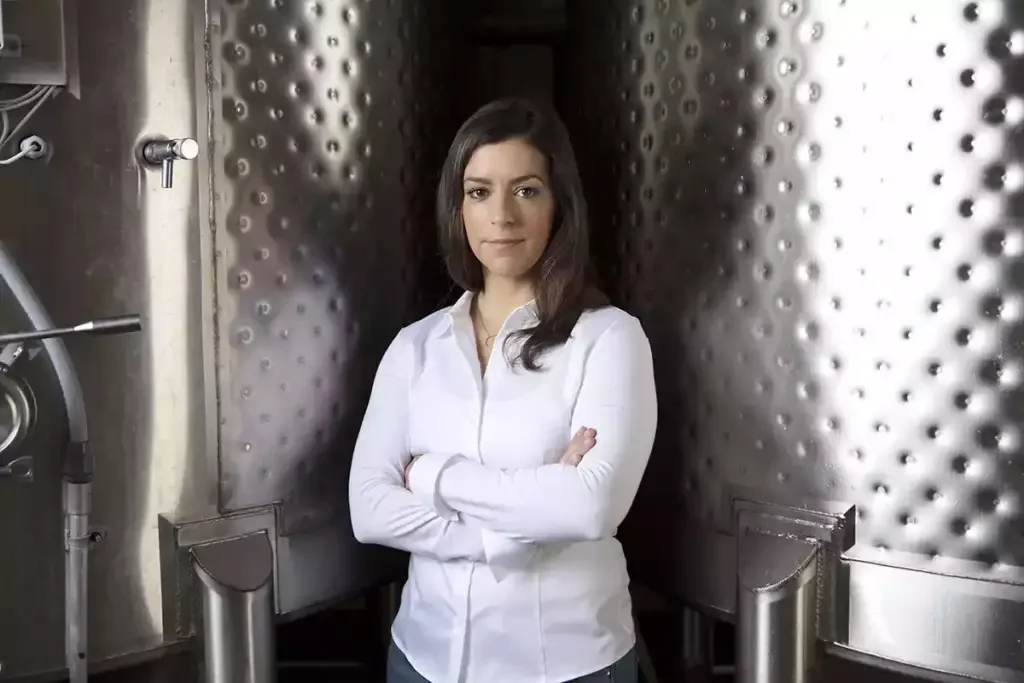
Behind the scenes, an experienced viticulturist collaborates closely with Pierre and Hélène, manicuring each of the blocks with an eye to the final blend. “We’re vignerons because we know what’s required in the vineyard,” says Pierre. The viticulturists defer to the Seillans’ instructions for key decisions such as pruning, fruit thinning, and harvesting. “Pruning is key because it provides the number of bunches the vine can grow: single cane, cordon, cordon de Royat, Guyot, double Guyot, two spur, one spur, six buds, seven buds, eight buds, whatever; each vine tells the viticulturist how it wants to be pruned,” says Pierre. Hélène adds: “Eighty percent of the quality comes from the vineyards, so you are effectively creating your wines in the vineyards. The human element is an integral part of the terroir.”
Picking the grapes goes beyond mere reliance on a Brix number, to taste and the balance of each micro-cru. Variations may occur according to vintage, but 23–24° Brix (12.8–13.3° Baumé) is a general average. Pierre takes pride in the fact that he’s never had to add tartaric acidity. “In California, they generally pick overripe,” he observes. “If you compare Bordeaux and California, the fruit expression is more beautiful in California, but the tannins here are rustic and never age. California producers think the tannins are ripening when you pick overripe, but you need to pick with the fruit expression. The density of the fruit here is superior, but the tannin is the trap. So I’m looking, above all, for balance, elegance, finesse, and complexity, where everything is in the right place. The wines, to me, are aérien.”
At harvest, they cut the skin and taste the berries. “When you see the blood coming out of the skin, it’s time to pick,” says Pierre. The 50-odd plots are vinified separately. After destemming, the grapes pass by an optical sorting machine for a cold soak for four days at between 53 and 55.5˚F (11.5–13˚C), with pump-overs twice a day. As the must gradually warms up, yeast is introduced, and the fermentation takes about eight days before the finished wine is drained into tank and press. The free run is channeled into separate tanks or barrels to undergo malolactic fermentation, after which the blending process can begin. “This is our palette of primary colors,” says Hélène. “The wines age for about six months before a first tasting and rating, blind. I prepare the wines and the bottles, then I leave the room—and I’ll come back in the room and just watch his face. He’ll talk about each one, I’ll take notes, and then I go back over my notes.” The job is then to start piecing the jigsaw together.
At this stage, the vineyard origin of the wines is revealed, “and that’s when you start blending the background and colors to come up with a pre-blend,” says Hélène. Samples are taken again and tweaked further to build complexity, with all four appellations woven into the blend each year. “We try not to study it too much, to avoid being too influenced,” says Hélène, “and we prefer to go with what we’re tasting, knowing what we’re trying to reach without always being sure why or understanding the route we take. How long do we keep it on skins? How long do we cold soak? Sometimes we make decisions, and we’re not quite sure why.” Once the blend is finalized, Pierre takes a sample home in a carafe, keeps it open for a week, tasting it every day, watching the gradual oxidation for a feel of how durable the wine is.
In partnership with the Jackson family properties Château Lassègue and Tenuta di Arceno, Vérité sources its oak from Merrain International, a stave mill in the Vosges region of northeast France. Following the sawing and grading, the oak staves—sourced from 17 forests; 16 French, one German—are seasoned in the open air for between two and three years, then custom-toasted before being shipped and assembled into barrels at World Cooperage in Missouri. This gives the Seillans precise control over the tightness of grain, porosity, tannins, and the contributory aromas and flavors of the wood itself.
“We’re not trying to extract, with lots of punch-downs and pump-overs,” says Hélène. “You don’t need to overdo it in the winemaking. […] When somebody really loves something here in the US, they tend to want to add more. And if it’s great, they think that more will make it even greater, but actually, when you do that sometimes, you lose the balance, and it becomes too much. We’re not reinventing the wheel but, rather, reverting to what my grandfather used to do.” That said, on one occasion after finalizing the blend, she argued with her father over a subtle change he felt could turn a good wine into an outstanding one. His intuition proved right. “Sometimes you think nothing can improve it, but this small nuance was a revelation,” admits Hélène.
Mission transmission
Two decades after the inaugural vintage of Vérité, the Jackson Family embarked on a significant new development in 2018: a new barrel chai and hospitality space on the existing estate property just outside Healdsburg at the juncture of the Alexander Valley, Chalk Hill, and Knights Hill AVAs in the foothills of the Mayacamas Mountains. Inspired by the symmetry and cloister concept of the Abbaye of Moissac in the south of France, Pierre’s son Nicolas designed the winery, aiming for a touch of European style. With a subtle nod toward Bordeaux, its discreet presence blends elegantly into the surrounding countryside, and the coolly styled interior (where tastings are available by appointment) is in sync with the style of the wine.
Father and daughter will continue to work side by side. Hélène’s goal is to maintain the “signature” of all three wines, while adapting to the future. “For the first ten years, he was on his own, finding the right vineyard spots, and it was hard with no help and so little happening in what was pretty much undiscovered land, undiscovered culture, undiscovered everything.” As the second decade unfolded, Hélène gradually stepped into a more prominent role. “It was about accepting me, adding to the portfolio, planting new blocks, and expanding the palette of wines. In the past five to seven years, we’re comfortable—we see eye to eye on everything. We work so much on instinct and not by protocol. Things come fast, ideas come quickly. And because we trust each other, we can be real with each other.”
“When I was six, and my mother gave me great wine to drink, it was for an education,” reflects Pierre. “The word alcohol didn’t exist. My wife Monique and I were taught by our parents in a very simple way to respect everything.” Pierre emphasizes that his role in crafting luxury wines goes beyond catering to the affluent or chasing scores. “My goal is to create a very high level of finesse—an elegant, world-class, complex wine that brings happiness to the table of customers around the world.” With a blend of humility and pride, Pierre reflects, “It’s my raison d’être and my need to give, or offer, my vision and my achievement to my daughter and my son, who I hope will continue the mission; just as when you educate people, your mission is to help the next generation to learn and understand. We all need a mission. This is the value of life.”
Tasting Verité
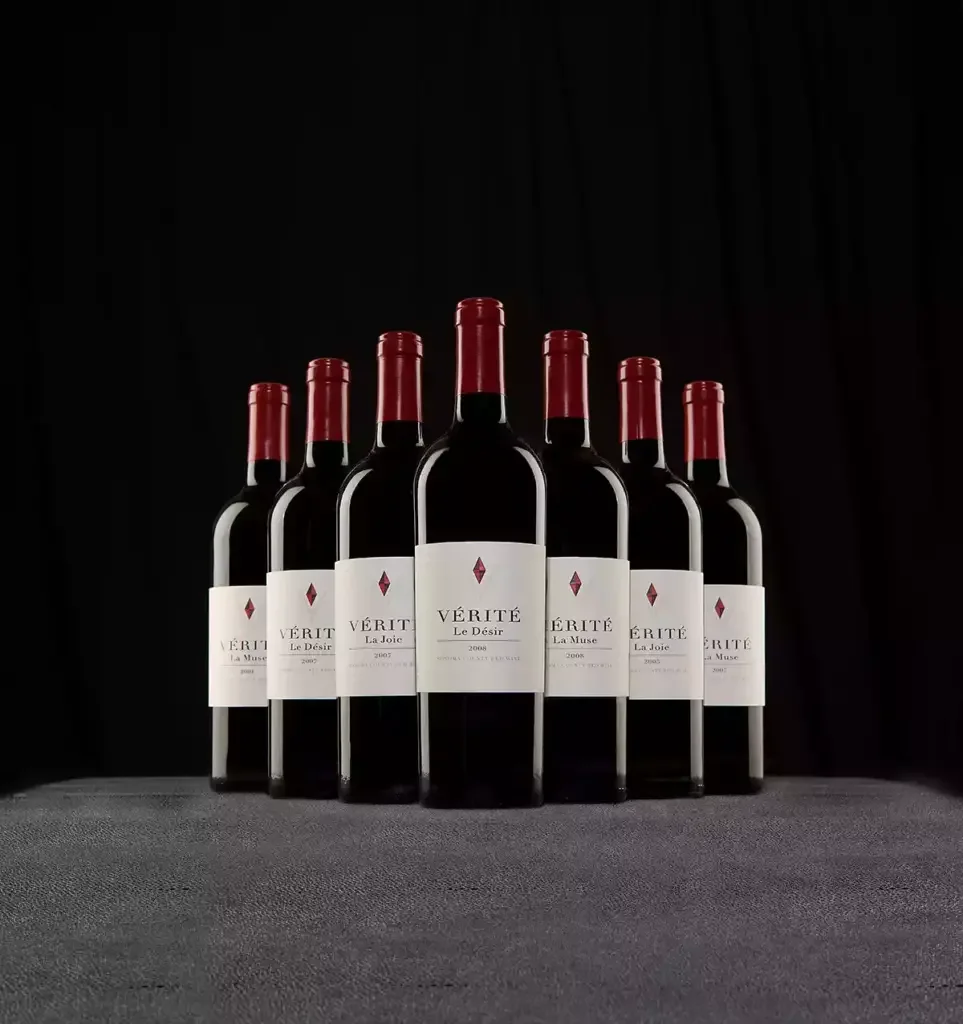
2019 Vérité La Muse
(90% Merlot, 5% Cabernet Franc, 5% Malbec)
From a supremely elegant vintage marked by optimal climate conditions, this Merlot-dominant blend is dark-hued and already sleek in aroma, with black cherry polished by vanilla-spicy oak and chocolate, and mocha. With a perfume reminiscent of a top Pomerol, it’s followed by silky black cherry and cassis fruit that’s intensely flavored, underpinned by a firm, lean streak of acidity. This is an elegant wine still in the first flush of youth but beautifully rendered and surprisingly approachable, with gentle tannins and a sturdy spine of acidity, with the potential to improve over 20 years. | 96
2019 Vérité La Joie
(84% Cabernet Sauvignon, 7% Merlot, 5% Cabernet Franc, 4% Petit Verdot)
Deep-hued and saturated in color, this unmistakably leans more to Cabernet than Merlot. Rich, cassis-like aromas are accompanied by an underlying herbal, almost minty character and a spicy, incense-like note. The Cabernet presence is opulent, not confected-sweet but rather fruit-sweet in the cassis and black-cherry spectrum, defined by a fine backbone of acidity and more evident tannin than in La Muse, albeit with a superfine texture and beautiful fruit quality. The most macho of the three reds, this can be cellared for 25+ years. | 97
2019 Vérité Le Désir
(83% Cabernet Franc, 8% Merlot, 5% Malbec, 4% Cabernet Sauvignon)
A deep, densely ruby-hued blend. The aromas here have the wow factor; distinctly Cabernet Franc—that is to say, highly perfumed, herbal, and inviting, showing more red fruits in the flavors in the raspberry spectrum, with a cranberry-like acidity that adds to the overall freshness. Well-integrated oak combines with a firm spine of acidity, and the wine’s youthful tannins—initially resolved and subtle—gradually assert themselves, adding to the structure. A wine with 20+ years’ potential. | 96
2019 Anakota Knights Valley
(100% Cabernet Sauvignon)
This pure Cabernet Sauvignon (“a homage to California drinking,” according to Hélène Seillan), from the southeast-facing Helena Dakota block of a vineyard planted in 1997, is dark and dense in color, showing primary black-cherry aromas and light, spicy oak, licorice, and tar notes. The fruit is rich and pure, with intense blueberry and black-cherry flavors, while powerful but resolved tannins and a firm spine of acidity make it invitingly fresh, almost juicy, albeit a muscular adolescent. Still primary, austere, and intense, with the acidity bringing minerality and finesse, this has the potential to age for three decades or more. | 95
2013 Vérité La Muse
(89% Merlot, 8% Cabernet Franc, 3% Malbec)
Originating from a relatively warm year in California, this Merlot-dominant blend is still remarkably deep in color after a decade, and the perfume is just starting to evolve. Youthful still, with subtle blackcurrant notes and richly flavored cassis fruit combining with licorice spice and a hint of incense and leather. There’s serious intensity of flavor, and the tannins are still present, albeit showing signs of a warm year balanced by fine refreshing acidity. | 95
2012 Vérité La Joie
(76% Cabernet Sauvignon, 12% Merlot, 8% Cabernet Franc, 4% Petit Verdot)
Dense in color, with a fine bouquet of spicy, chocolaty richness. The fruit here, from a warm vintage, is marked by opulently ripe cassis flavors. Quite firm in tannin, nonetheless, seemingly from a warm vintage, with a dense and chewy presence that’s underpinned by a fine refreshing streak of acidity running through the wine, bringing balance and refreshment. | 94
2011 Vérité La Joie
(74% Cabernet Sauvignon, 10% Cabernet Franc, 7% Merlot, 6% Petit Verdot, 3% Malbec)
The harvest was late in 2011—“one of the most fantastic vintages,” according to Pierre Seillan. Dense in youthful ruby, it has a powerful, black-fruit Cabernet bouquet, with undertones of ripe, red capsicum and licorice spice. The texture is immensely dense, featuring a rich, powerfully flavored cassis and chocolaty fruit quality, still underpinned by firm tannins and a fine spine of acidity, contributing to a structure in a wine that’s more Margaux than Pauillac in style. Even now, it is still in the first flush of adolescence, with another 20 years of aging potential. | 94
2007 Vérité Le Désir
(44% Cabernet Franc, 44% Merlot, 8% Cabernet Sauvignon, 4% Malbec)
From a great year, this Cabernet Franc-dominant blend is still a youthful ruby in color. The bouquet is just beginning to emerge, offering a fine perfume, typical of the variety. The flavors are intense, showing raspberry and cherry fruit, and only now are the tannins evolving into middle-aged maturity, all underlined by a typical firm spine of refreshing acidity. It’s lovely to drink now and will remain so for a good decade or longer. | 95
2005 Vérité La Muse
(88% Merlot, 10% Cabernet Franc, 2% Malbec)
The 2005 Vérité La Muse presents a youthful color and an inviting aromatic profile that is both spicy and rich. The wine showcases sumptuous, ripe-Merlot black-cherry fruit, offering a voluptuously smooth texture. The overall impression is one of seductive, sweet fruit quality. The finish, however, is marked by its slightly astringent tannins. | 93
2004 Vérité Le Désir
(49.2% Merlot, 46.9% Cabernet Franc, 3.8% Cabernet Sauvignon, 0.1% Malbec)
Deep in color and maintaining its youthful character, this exudes a seductive bouquet that’s classic Cabernet Franc, with dark berry, spice, and a hint of capsicum. The fruit quality is ripe, sweet, and sumptuously juicy, with a really supple texture and yet also wonderfully refreshing. In a good place after nearly two decades, this wine still has plenty of life left in it. | 94
1998 Vérité La Joie
(70% Cabernet Sauvignon, 30% Merlot)
This wine, Pierre’s first Vérité, marks a sentimental journey for the Frenchman, who, in a tough vintage, used his vigneron nous to incorporate verjus with a view to maintaining the necessary acidity for longevity. With a bouquet of truffle and sun-dried tomato, it’s already umami-savory at the outset. This Bordeaux-like blend has an ethereal fruit quality, showing an opulence that is at the same time mature and leathery. Still remarkably youthful, like a mature top Margaux. | 93

